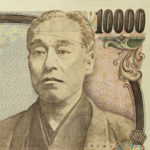In 2013, Kyle Bass from Hayman Capital predicted a loss of confidence in the Japanese Yen, and that the dollar will consequently rise far over the 200 yen.
Kyle argued: “you have to realize when your debt is 24 times central government tax revenue, and you have a secular decline in population…what happens when you have a debt crisis? Well, your currency collapses.1)GAIM 2013 Yen could hit 200 vs the dollar Hayman’s Bass Source YouTube”
We never believed this would happen, and as we wrote in February, we expect the Japanese Yen regain value. Since then the yen rose more than 10%2)Bank of Japan is selling out its people. Source Gefira 2016-02-01.
We cannot understand how Japanese public debt can crush the Yen as long as foreign investors do not hold Japanese debt. Japanese fiscal and monetary policy kept the Yen relative cheap and Japanese authorities struggled to prevent the Yen from gaining value. We cannot follow Kyle Bass reasoning. Unless you assume the Japanese public debt was issued to foreign creditors to keep the Yen expensive as is the case with the dollar, Japanese government debt cannot crush the currency.
The Japanese Yen, Chinese Renminbi and the Saudi Riyal are artificially cheap, as the authorities of these countries accumulate treasuries to support the dollar.
The Japanese Treasury and the Japanese Central Bank (BoJ) are both government institutions belonging to the same sovereign state.
Since 2013, the Bank of Japan bought an enormous amount of Japanese government bonds. The BoJ managed to reduce significantly the Japanese debt held by the public. 30% of Japanese Government bonds are now in the hands of the BoJ which is an integral part of the Japanese state3)Japan’s Debt Burden Is Quietly Falling the Most in the World Source Bloomberg 2016-06-10. The Japanese state owes 30% of the Japanese public debt to itself. To get rid of this 30% is just a formality; the BoJ can write off the debt or transfer them to 0% interest (zero-coupons) never-ending bonds (perpetual) without hurting anybody.
The assets of the BoJ (the Japanese state) are not limited to government bonds. The Japanese state is the owner of the second largest FX reserve in the world after that of China. Japan had 1.26 trillion dollars equivalent of international reserve asset4)Japan increases holdings of Treasury debt to $1.15 trillion Source Japan News, which is about 10% of the Japanese public debt.
The decline of the Yen started in 2013 due to Japanese Monetary policy. This monetary policy drove Japanese investors out of the local bond market; it fueled the global carry trade. Japanese investors borrowed cheap money to fund investments over sea, driving the yen down and increasing Japans overseas assets.
The net value of assets held by the Japanese government, businesses and individuals hit a record 366.86 trillion yen in 2014 and started to decline slightly in 2015, but Japan remains the biggest creditor nation for 25 years in a row. Japan’s net external assets were 1.7 times those held by Germany which took over China as the world’s No.2 creditor nation.
Japan’s foreign assets, liabilities, production and consumption will determine the future of the Yen.
Japan is the first advanced economy that has to deal with an ageing population5)Japan’s population is shrinking: What does it mean for the economy? Source World Economic Forum. Japan’s ageing population does not have to become a real problem for the Japanese society. Japan has a homogeneous population and is an extremely safe society with a low crime rate. Since Japan does not allow immigrants to enter the country, the demographics will not change the face of the nation in the long run. Unlike in Europe and the USA, there are no cultural, religious or race issues in the Japanese society, and the Japanese government does not have to deploy the army on the street of Japanese cities to prevent violent escalation within its own community as now is the case in Europe and the US.
Japanese national production will decline, but at the same time, Japanese consumption will be significantly lower, elderly people consume less than people in their middle ages. Because the total labour force determines GDP, an increasing workforce in the developed world always results in a higher GDP, while a declining workforce will inevitably lead to a lower GDP.
A decline in GDP in two successive quarters is called a recession and a prolonged “recession” in Japan is indispensable. Japan does not have daily mass shootings, as we see in the USA, the country does not have to deploy its army in Tokyo as in Paris. Nevertheless, international bankers, global financial community and international media, will make Japan the example of a failed economy measured by one key indicator: “GDP.”
Email us for a free copy of our comprehensive January newsletter on China’s Debt problem (editor@gefira.org )
References
| 1. | ↑ | GAIM 2013 Yen could hit 200 vs the dollar Hayman’s Bass Source YouTube |
| 2. | ↑ | Bank of Japan is selling out its people. Source Gefira 2016-02-01 |
| 3. | ↑ | Japan’s Debt Burden Is Quietly Falling the Most in the World Source Bloomberg 2016-06-10 |
| 4. | ↑ | Japan increases holdings of Treasury debt to $1.15 trillion Source Japan News |
| 5. | ↑ | Japan’s population is shrinking: What does it mean for the economy? Source World Economic Forum |






